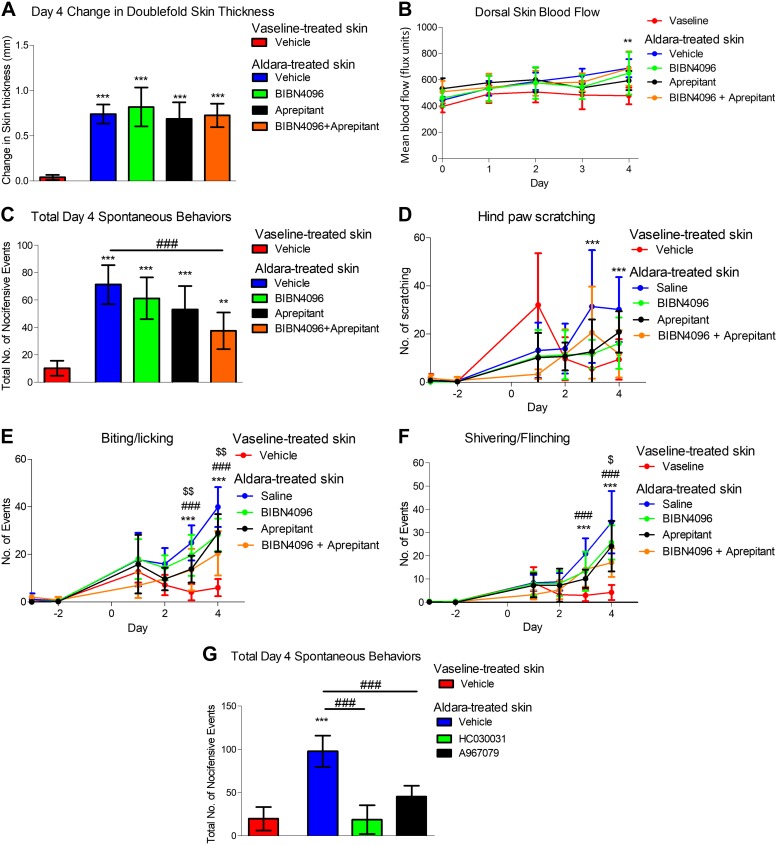Figure 8 .
Neuropeptides SP/CGRP and TRPA1 contribute to cutaneous discomfort, independent of the development of skin pathology. A) Change in double-fold skin thickness (mm). B) Dorsal skin blood flow. C) Total d 4 spontaneous behaviors in response to various treatment regime. D) Total number of hind paw scratching events. E) Total number of biting/licking events. F) Total number of flinching events. G) Total d 4 spontaneous behaviors in response to acute TRPA1 antagonist administration. Graphs represent means ± sd, and data were analyzed by 1-way or repeated-measures ANOVA with Bonferroni’s post hoc test; n = 5–7 animals/group. **P < 0.01, ***P < 0.001 Vaseline vs. Aldara, ###P < 0.001 vehicle vs. treatments (HC030031 or the different combinations of BIBN4096 and aprepitant), $P < 0.05, $$P < 0.01 between BIBN4096+ aprepitant vs. aprepitant.

